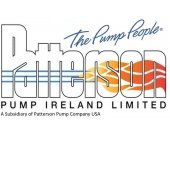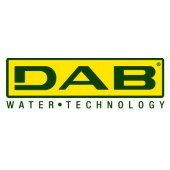Shape Of H-Q Curves
The shape of the pump duty curve and it's course are main basis for judging all technical application criteria regarding the operational character of the system. This is particularly the case with regards to heating circulating systems in building technology and especially in the case of variable flow systems with changing Duty Points due to throttling control by thermostatic radiator valves (TRVs).
Here the basis of sizing of pumps is the flow-rate required to handle the transfer of the maximum design heat capacity to cover the maximum design heating load. The rate of flow through the radiator is reduced by the closing or throttling of the TRVs, always resulting in a duty point shift on the pump curve towards higher heads.
Flat Curve Characteristics
The feature of flat-sloping curves is that even large changes of flow only cause very small variations in head. The net result of a curve with flat characteristics are: - Avoidance of objectionable system noise. - No changes to the control behaviour. Pumps with flat-curve characteristics fulfil the requirement of proportional reduction of flow in line with the throttling of radiators.
Steep Curve Characteristics
The feature of steep-sloping curves is that even small changes in flow cause relatively large variations to the head. The unwanted effects of TRVs can be avoided by applying pump performance controls. Automatic pump performance control units offer solutions whereby the head increase (due to throttling by the TRVs) can be avoided automatically using load sensitive controls. The steeper curve characteristics are advantageously used in pipe systems where no effects whatsoever can arise from throttling action i.e. with radiant under-floor heating, one pipe installations or in such cases where, due to loading from the friction loss calculations with undue safety factors, large variations exist between actual and specified duty points. Because practice proves that the actual friction loss of the pipe system is, almost without exception, lower than that theoretically calculated, the actual system curve is of a more flat characteristic than anticipated. The more steep pump characteristics then offer the advantage that the shift to the right of the duty point (intersection of pump and system curves) is less appreciable and the resulting increase in flow is less than that of a flat curve characteristic. The danger of generating velocity noise in the pipe work or fittings due to too large a flow rate is thus reduced.
Back to Resources







2.jpg&w=170&h=170)
1.png&w=170&h=170)
3.png&w=170&h=170)

